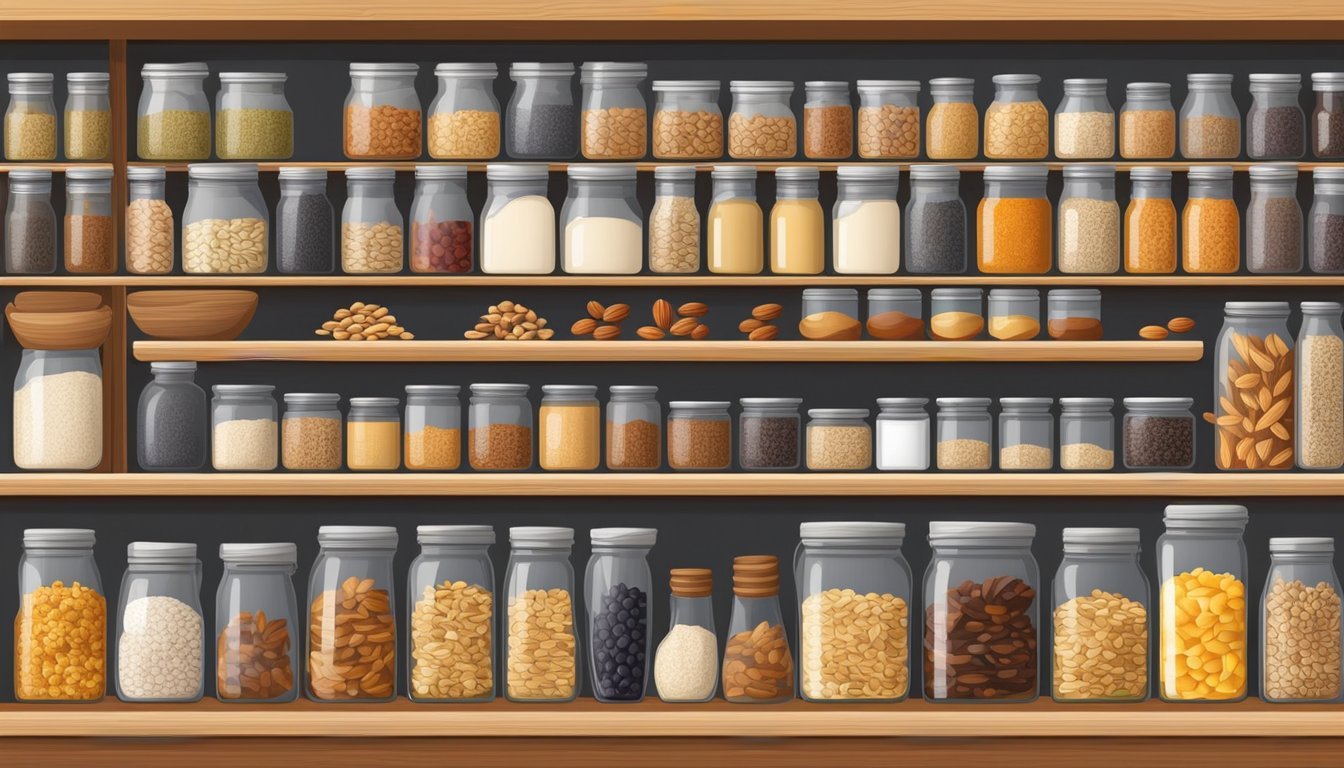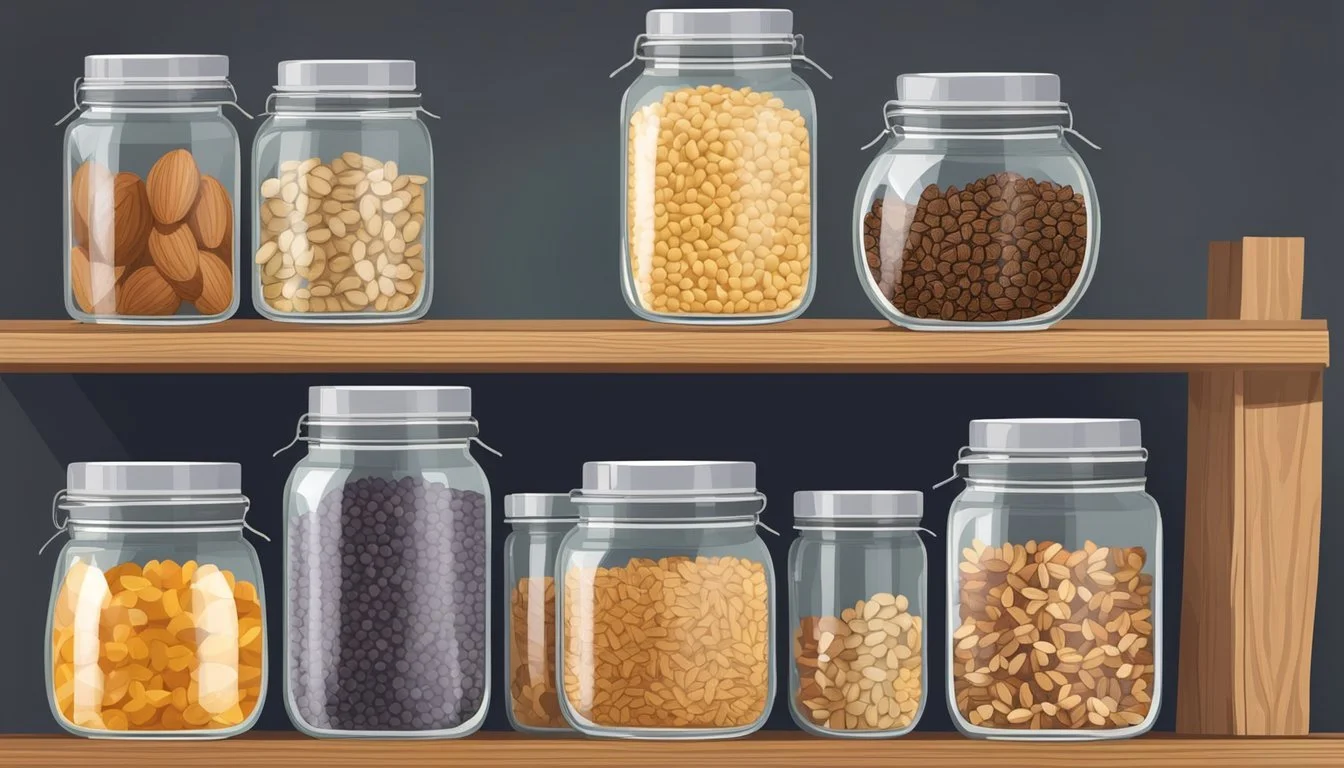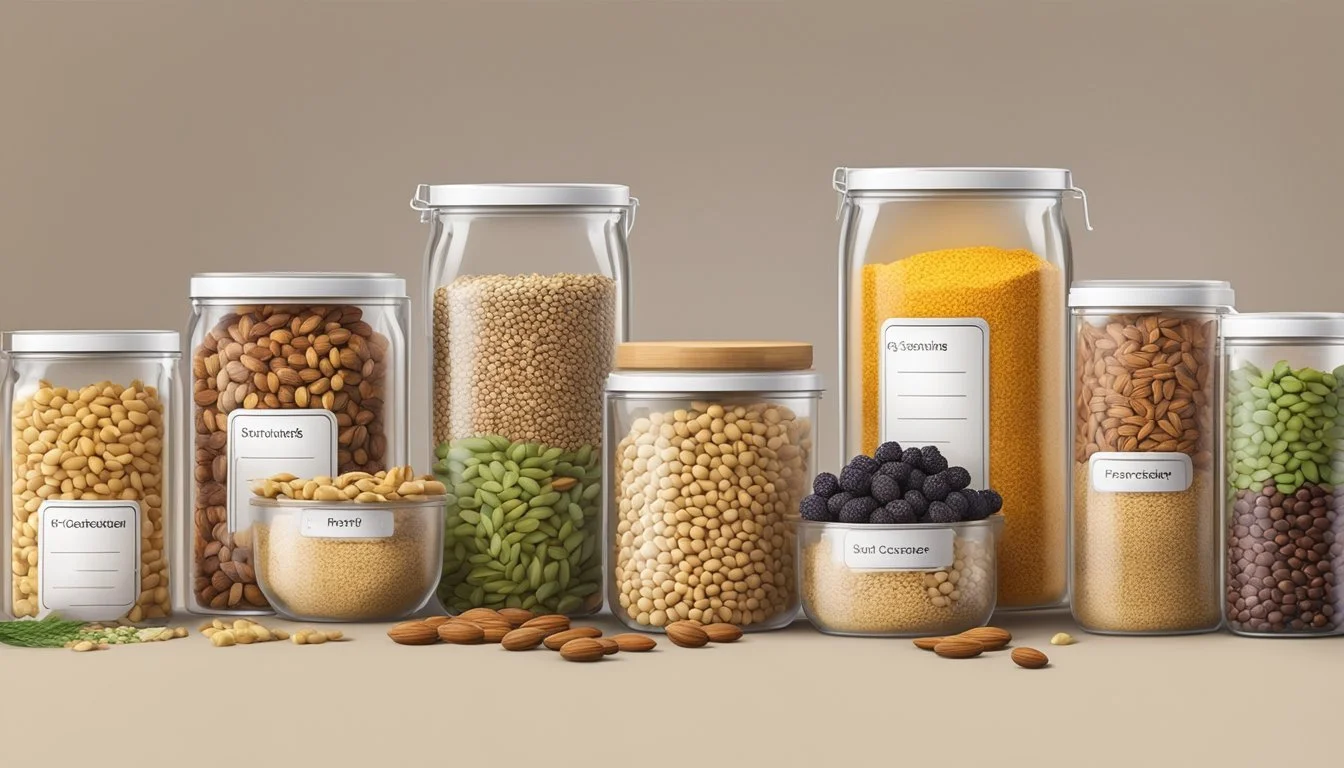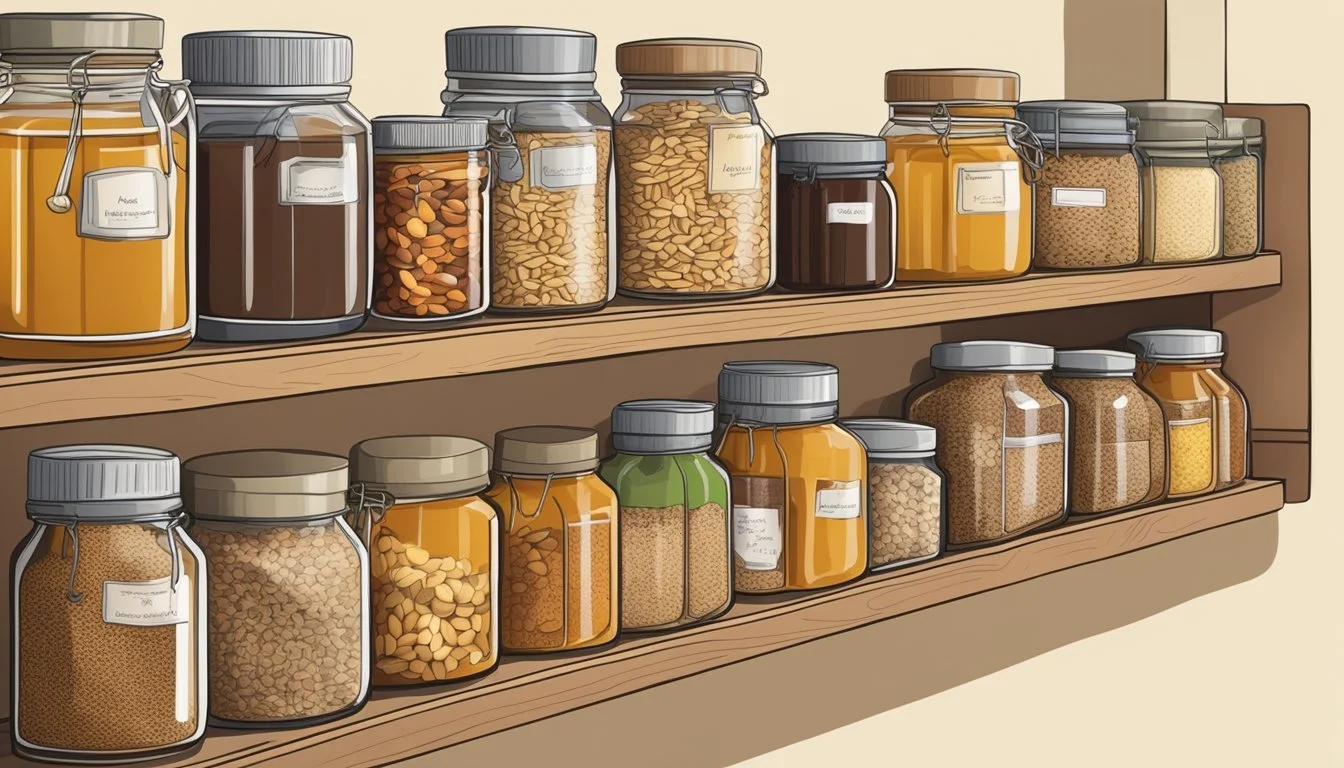Shelf-Stable Ingredients for Homemade Breakfast Cereals
Essential Picks for Nutritious Mornings
Creating homemade breakfast cereal offers a multitude of benefits, ranging from customized flavors to the absence of preservatives and added sugars that often accompany store-bought varieties. The key to a successful homemade cereal lies in the use of shelf-stable ingredients, which not only ensure a longer shelf life but also provide convenience for those with busy lifestyles. By focusing on these ingredients, anyone can prepare a nutritious and tasty breakfast option that is ready to eat at a moment's notice.
Shelf-stable ingredients like whole grains, nuts (What wine goes well with nuts?), seeds, and dried fruits (What wine goes well with dried fruits?) form the foundation of many homemade cereal recipes. These components are not only packed with essential nutrients but also maintain their quality and texture over time, making them ideal for cereal creation. Whole grains such as oats and wheat flour offer a hearty base, while nuts and seeds contribute a satisfying crunch and a boost of proteins and healthy fats. Dried fruits, on the other hand, provide natural sweetness and a chewy contrast to the crunchy mix.
In the crafting of homemade cereal, the method of preparation is just as important as the ingredients themselves. Baking mixtures at a low temperature is a common technique, which ensures even toasting and helps to lock in the flavors of the grains and add-ins. Whether it's a simple mix of oats and honey or an elaborate blend of spiced nuts and exotic fruits, the possibilities are endless with shelf-stable ingredients. With careful selection and a bit of creativity, homemade cereals can be a delicious and wholesome addition to any morning routine.
Understanding Breakfast Cereals
Breakfast cereals have evolved significantly from their simple beginnings to the complex and varied products on shelves today, offering a range of nutritional values.
Historical Background of Cereals
Cereal consumption can be traced back to ancient civilizations where grains were a staple in the diet. Initially, these grains were consumed in their whole, unprocessed form, often cooked or soaked to make them palatable. It was not until the late 19th century that the concept of ready-to-eat cereal was developed, revolutionizing breakfast habits.
Commercial Cereal Processing
Commercial cereal processing often involves several steps, such as:
Grain Selection and Cleaning: Selecting quality whole grains and cleaning them to remove impurities.
Cooking: Grains are cooked to improve digestibility.
Extrusion or Rolling: The grains are then shaped, by extruding for shapes like flakes or puffs or by rolling for flat shapes like flakes.
Drying and Toasting: To develop flavor and ensure shelf-stability.
The processing can lead to loss of nutrients, which are sometimes added back in the form of synthetic vitamins and minerals.
Nutritional Value of Cereals
The nutritional quality of breakfast cereals can vary widely:
Whole Grains: They are a good source of fiber and essential nutrients.
Fiber Content: Essential for digestion and can help with sustained energy release.
Vitamins and Minerals: Many cereals are fortified with added vitamins and minerals.
Gluten-Free Options: Available for individuals with gluten intolerances.
It's important for consumers to read labels carefully to understand the nutritional content and presence of added nutrients or synthetic vitamins in boxed breakfast cereals, as these factors can significantly affect the overall healthfulness of the cereal.
Benefits of Homemade Breakfast Cereals
When one opts to create their own breakfast cereals, it allows for a tailor-made experience, the assurance of nutritious choices, and the opportunity to strategically manage nutritional intake.
Customizable Ingredients
With homemade breakfast cereals, individuals have complete control over what goes into their recipe. They can mix various grains, nuts, and seeds to enhance the protein and fiber content or include healthy fats like flax or chia seeds. Those with dietary restrictions can easily create gluten-free options or add specific organic ingredients to adhere to their preferences.
Healthier Alternatives to Boxed Cereals
Boxed cereals from the grocery store may contain excessive sugars and preservatives. Homemade granola and cereal recipes, on the other hand, are a healthier option with the potential to use whole ingredients, less sugar, and no artificial additives. This can relate to fewer calories from added sugars and better nutrition overall.
Control Over Nutritional Content
One can curate their breakfast cereal to contain exactly what they need nutritionally, whether it's a low-calorie option or one packed with healthy breakfast elements. The nutritional facts of each serving can be assessed, including the amount of protein, healthy fats, and fiber, to ensure a balanced meal. Moreover, by hand-picking ingredients, it becomes easier to include components with health benefits such as antioxidants or omega-3 fatty acids.
Selecting Ingredients for Shelf-Stability
In crafting homemade breakfast cereals, choosing ingredients that maintain freshness and quality over time is crucial. This means focusing on whole grains, nuts and seeds, and dried fruits that are inherently shelf-stable.
Exploring Whole Grains
Whole grains are the foundation of many breakfast cereals due to their nutritional value and long shelf life. Oats and quinoa are prime examples of cereal grains that not only add texture and flavor but also remain fresh when stored properly in a cool, dry place. They are rich in fiber and can be used in their whole form, rolled, or puffed.
Oats: Versatile and hearty, they can be the main ingredient in granola or a crispy addition to muesli.
Quinoa: A gluten-free alternative that adds a protein boost and a unique nutty flavor to breakfast blends.
Choices of Nuts and Seeds
Nuts and seeds are excellent sources of healthy fats, proteins, and various micronutrients, making them perfect add-ins for a nutritious breakfast cereal. To ensure longevity, it's best to use raw, unprocessed nuts such as almonds or seeds like flaxseeds, which have natural oils that can keep them from spoiling quickly.
Almonds: Provide a satisfying crunch and are high in vitamin E, which is known for its antioxidant properties.
Flaxseeds: A good source of omega-3 fatty acids, known for their heart health benefits.
Incorporating Dried Fruits
Dried fruits like raisins or other dehydrated berries add natural sweetness and a chewy texture to cereal mixes. They are also packed with fibers and can retain much of the nutrients of their fresh counterparts. Being low in moisture, they discourage bacterial growth, contributing to the shelf-stability of the cereal.
Raisins: Offer bursts of sweetness and are a traditional complement to oat-based cereals.
Dried Fruit: Choose a variety, such as dehydrated apples, bananas, or berries, to diversify flavors and nutritional content.
Sweeteners and Flavorings
Choosing the right sweeteners and flavorings is crucial for creating a homemade breakfast cereal that is both delicious and compliant with personal dietary preferences. This section will discuss the types of sweeteners available and various agents that can add flavor to your cereal.
Natural versus Processed Sweeteners
One can differentiate sweeteners into two broad categories: natural and processed. Natural sweeteners, such as honey, maple syrup, and fruit, provide a wealth of flavor profiles and are often considered healthier options due to their unrefined nature. On the other hand, processed sweeteners like sugar and high-fructose corn syrup are more commonly found in commercial cereals and are valued for their consistent sweetness and longer shelf life.
Honey: Adds a floral sweetness; antibacterial properties.
Maple Syrup: Offers rich, woodsy flavors; contains minerals and antioxidants.
Sugar: Provides neutral sweetness; highly refined.
Coconut sugar: Delivers a caramel-like taste; low glycemic index.
For those looking to maintain a natural diet, sucanat (a less processed form of cane sugar) or fruit can serve as alternative sweeteners. They not only contribute to the overall taste of the cereal but may also offer additional nutrients.
Variety of Flavoring Agents
Adding flavor to homemade cereals can transform them from bland to bold without compromising on health. Various flavoring agents serve this purpose:
Vanilla Extract: Imparts a warm, creamy essence.
Cinnamon: Provides a sweet and spicy note; potential health benefits.
Lemon Juice: Offers brightness and tanginess to the cereal.
Apple Cider Vinegar: Contributes a subtle tartness; believed to have health benefits.
It's useful to remember that flavorings like cinnamon, besides adding a delightful fragrance, are also reputed for their potential health benefits, such as blood sugar regulation. The key to using these agents lies in their careful combination, considering how individual flavors complement each other to produce a harmonious final product.
Preparation Techniques for Homemade Cereal
Creating homemade cereal involves specific preparation techniques that ensure a delicious and shelf-stable product. The process generally includes a combination of baking and drying for texture, and careful mixing of components to balance flavors and nutritional content.
Baking and Drying Methods
When one sets out to make homemade cereal, baking is a prevalent method to achieve the desired crunch and shelf stability. It typically begins with preheating the oven, a crucial step that ensures even cooking. For example, a granola recipe might require the oven to be preheated to 300°F. Baking sheets should be lined with parchment paper to prevent sticking and to make cleanup easier. During the baking process, a dry heat not only cooks the cereal but also removes moisture, which is essential for creating a crispy texture and extending the cereal's shelf life.
Drying can occur during or after baking. Ingredients such as rolled oats may take longer to dry out and become crisp, so ensuring they are evenly spread on the baking sheet is vital. In some cases, one might lower the oven's temperature and prolong baking time for a more thorough dryness, which is especially important for clusters of ingredients that might hold onto moisture.
Mixing and Combining Components
The mixing stage is where flavors and nutrients are evenly distributed throughout the cereal. It usually involves combining dry ingredients like oats, seeds, nuts, and possibly protein sources like powdered milk or nut flours, ensuring a balanced nutrient profile. Sweetener and flavorings, such as honey or cinnamon, should be mixed thoroughly to coat the dry ingredients for homogeneous taste and appeal.
For a granola recipe, the method might include stirring the dry mixture while slowly adding wet components like honey, oil, and water to bind everything together before baking. Other homemade cereals might involve an extrusion process, where a mixture is forced through a shaping device under heat and pressure—this isn’t common in home kitchens but is notable for creating puffed or shaped cereal pieces.
Ensuring the right balance of dry and wet ingredients is crucial. Too much liquid can result in a soggy cereal, while not enough might make it too dry or prevent clusters from forming. One may also add components like baking soda to help with creating a lighter, airier texture in the final product.
Finalizing and Storing Cereal
When homemade breakfast cereals are complete, the final steps are crucial to maintain that perfect crunch and ensure the cereal stays fresh for as long as possible. Choosing the right storage solutions can greatly extend the shelf life and preserve the quality of your cereal.
Achieving The Right Crunch
To ensure a satisfying crunch in homemade cereal, one must consider both the baking process and the cooling phase. Cereals should be evenly spread on a baking sheet and baked until they reach a golden hue, indicating a proper texture. After baking, cereals need to be cooled completely at room temperature to avoid moisture trap which could lead to a soggy texture. Once completely cooled, the cereals should be broken into desired serving sizes.
Cooling Time: At least 30 minutes at room temperature.
Baking Tip: Stir cereals halfway through to ensure even baking.
Storage Options to Maintain Freshness
For long-term freshness, cereal should be stored in an airtight container to protect it from moisture and pests. Below are some effective storage options:
Airtight Containers: Clear, sealed containers not only keep cereals fresh but also allow for easy identification. Remember to leave as little air as possible in the container.
Container Type Benefits Considerations Glass Jars Reusable and durable May be heavy Plastic Containers Lightweight and sturdy Check for BPA-free models
Refrigeration: In more humid climates, storing cereal in the fridge can extend freshness, especially if the cereal contains fresh fruit or other perishable ingredients.
Serving Sizes: Pre-portion cereal into single-serving bags to maintain freshness and aid in weight loss by controlling portion sizes.
Shelf-Stable Ingredients: Use ingredients like dried fruits or nuts, which do not require refrigeration for storage convenience and to ensure a longer shelf life.
Remember, homemade cereals can be tailored to dietary needs and flavor preferences while providing a convenience that rivals store-bought options. They should be checked periodically to ensure they remain dry and free from spoilage.
Special Considerations
Creating shelf-stable homemade breakfast cereals requires attention to dietary needs and potential allergens, ensuring a safe and enjoyable meal for everyone.
Gluten-Free and Vegan Options
For those requiring gluten-free cereals, gluten-free oats are a safe staple ingredient, as oats naturally do not contain gluten. However, it is crucial to ensure that they are certified gluten-free to avoid cross-contamination. To meet vegan dietary requirements, dairy and honey substitutes like almond milk or agave syrup can be used. Almond extract is also a popular flavoring choice for vegan cereal recipes.
Gluten-Free Ingredients to Consider:
Certified gluten-free oats
Rice or buckwheat flakes
Cornmeal
Vegan Substitutes:
Plant-based milks (almond, soy, oat)
Maple syrup or agave nectar instead of honey
Nut or seed butter instead of dairy
Managing Allergies and Sensitivities
When addressing allergies and sensitivities, thorough knowledge of ingredients is key. Manufacturers often produce homemade cereal ingredients on equipment shared with allergenic foods, posing a risk of cross-contamination. Opting for boxed breakfast cereal can often introduce unwanted additives, preservatives, and chemicals, which may be harsh or toxic for sensitive individuals. Careful selection of organic and natural ingredients minimizes these risks.
Key Allergens in Breakfast Cereals:
Nuts (e.g., almonds, hazelnuts)
Wheat (gluten)
Soy
Precautionary Measures:
Reading labels for potential allergens
Purchasing ingredients from reputable sources
Using separate utensils and containers for allergen-free cooking
Remember, the responsibility lies with the preparer to verify the safety and suitability of all ingredients used in homemade cereal recipes.
Recipe Variations and Serving Suggestions
Creating homemade breakfast cereals using shelf-stable ingredients allows for an array of variations to suit any taste preference and dietary need. By experimenting with different components and pairings, one can enjoy a nutritious and delicious start to the day.
Playing with Flavors and Textures
One can enhance the flavor of homemade granola by incorporating a variety of nuts and seeds such as sliced almonds and pumpkin seeds, both of which contribute a crunchy texture and an extra dose of protein. Dried fruits, ranging from raisins to chopped apricots, add natural sweetness and chewiness. Sweeteners like honey, particularly in varieties like Honey Nut Cheerios, can bring a comforting golden taste.
For those seeking a gluten-free option, organic cereals made from buckwheat or quinoa flakes serve as excellent bases. To mimic popular brands like Purely Elizabeth, add superfood seeds like chia or flax for an extra nutritional boost.
Pairing with Yogurts and Milks
Yogurt: Combining cereal with yogurt not only adds creaminess but also provides a probiotic lift. Opt for plain Greek yogurt for a higher protein content, and layer it with homemade granola for a parfait. Top with fresh berries for an added antioxidant kick.
Milk Varieties Description Pairing Ideas Almond Milk A nutty, dairy-free alternative. Complements the taste of honey-flavored granolas. Soy Milk Provides a creamy texture with added protein. Pairs well with cereals high in nuts and seeds. Oat Milk A sweet, full-bodied option. Ideal with organic cereals or snack mixes.
Experimenting with these dairy and non-dairy options can enhance the flavor profile and nutritional value of your breakfast, catering to both personal preference and dietary restrictions.
Sustainable and Ethical Considerations
Creating homemade breakfast cereals aligns closely with the values of sustainability and ethical production. Consumers who opt to prepare their own cereal can exercise greater control over their environmental impact and support practices that align with moral and ecological principles.
Impact of Homemade Cereal on Environment
Homemade cereals significantly reduce packaging waste and carbon footprint, as they eliminate the need for single-use plastics that are common with store-bought options. Using shelf-stable ingredients like oats, nuts, and seeds, individuals can create a variety of cereal mixes that are both nutritious and environmentally friendly.
Sustainable practices include:
Choosing ingredients with lower water and carbon footprints
Minimizing food waste by buying in bulk and using all parts of the ingredient
Utilizing energy-efficient cooking methods
By integrating organic cereals into their breakfast routines, consumers can further decrease the amount of chemical pesticides and fertilizers that contribute to soil and water pollution.
Supporting Organic and Local Produce
Local produce is a cornerstone of ethical consumption when it comes to preparing homemade cereals. Consumers are encouraged to source ingredients from local farmers' markets or community-supported agriculture (CSA) programs, which supports the local economy and reduces food miles.
Benefits of using organic and local produce:
Organic: Ensures that the production process avoids the use of synthetic pesticides and GMOs, thus safeguarding biodiversity and promoting soil health.
Local: Strengthens community bonds and often results in fresher ingredients due to reduced transport times.
Ethical considerations extend to ensuring that sourcing methods do not harm wildlife habitats and support fair labor practices. Committing to sustainable and ethical standards in the creation of homemade breakfast cereals reflects a conscious decision to prioritize the health of the planet and its inhabitants.










